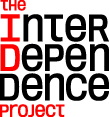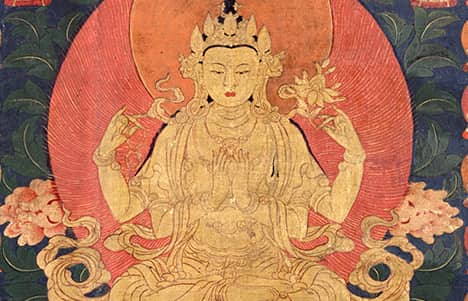
Theme: Compassion
About the Meditation
Meditation session led by Sharon Salzberg.
The guided meditation begins at 16:50.
For centuries Himalayan practitioners have used meditation to quiet the mind, open the heart, calm the nervous system, and increase focus. Now Western scientists, business leaders, and the secular world have embraced meditation as a vital tool for brain health.
Whether you’re a beginner, a dabbler, or a skilled meditator seeking the company of others, join expert teachers in a forty-five-minute weekly program designed to fit into your lunch break. Each session will be inspired by a different work of art from the Rubin Museum’s collection and will include an opening talk, a twenty-minute meditation session, and a closing discussion.
This program is supported with thanks to our presenting partners Sharon Salzberg, the Interdependence Project and Parabola Magazine.


Related Artwork

One of the most recognizable mantras in the world is om mani padme hum, often called the mantra of compassion. It is associated with the bodhisattva Avalokiteshvara, who has countless forms, both peaceful and wrathful. The central figure in this painting is red Avalokiteshvara, known as Rakta Avalokiteshvara. He beckons viewers with his right hand extended downward in the gesture of supreme generosity. The left hand holds the stem of a pink lotus flower blossoming over his shoulder. Around his radiant body, tethered to his gaze by fine lines of gold, are worldly deities, many originating in the Hindu tradition, such as Shiva, Brahma, Surya, Varuna, Ananta, Chandra, Vishnu, and Agni. This symbolizes his ability to see and manifest his compassion in all realms while all other deities pay homage to him.
Practitioners who are developing the aspiration of mind awakening, also known as bodhichitta, recite mantras and visualize the deity, aspiring to make their body, speech, and mind indistinguishable from the bodhisattva’s. Red Avalokiteshvara’s appearance is laid out in ritual texts and painted in thangkas to help practitioners with visualization and training the mind.
About the Speaker

Sharon Salzberg, cofounder of the Insight Meditation Society in Barre, Massachusetts, has guided meditation retreats worldwide since 1974. Sharon’s latest book is Real Love: The Art of Mindful Connection. She is a weekly columnist for On Being, a regular contributor to the Huffington Post, and the author of several other books including the New York Times bestseller Real Happiness: The Power of Meditation, Faith: Trusting Your Own Deepest Experience, and Lovingkindness: The Revolutionary Art of Happiness. Sharon has been a regular participant in many onstage conversations at the Rubin.
